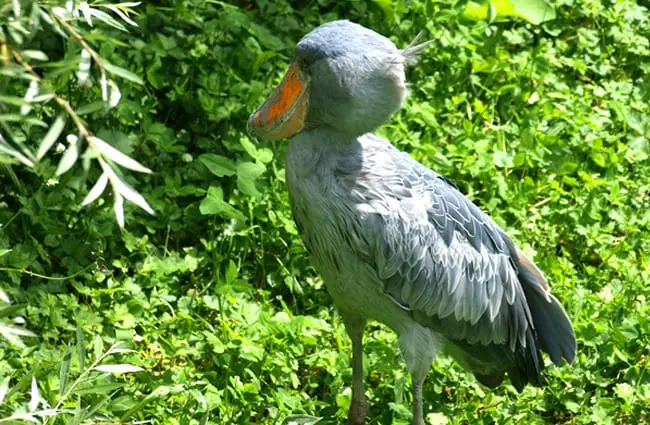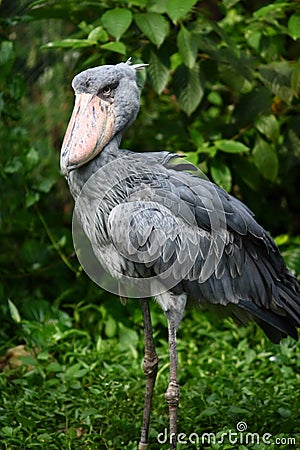
They primarily live in tropical locations in central Africa, such as Sudan, Uganda, and Zambia. Shoebill storks are aquatic birds with fairly dark-colored long legs with a tarsus of length range of 21.7- 25.5 cm, their feet are large consisting of along. It has a somewhat stork-like overall form and has previously been classified with the storks in the order Ciconiiformes based on this morphology. It derives its name from its enormous shoe-shaped bill. Shoebills are large birds that can grow to nearly five feet (1.52 meters) tall. The shoebill (Balaeniceps rex) also known as the whalebill, whale-headed stork or shoe-billed stork, is a very large long-legged wading bird. Our vibrant and detailed images capture these majestic. It’s loud and scary and the last sound that lots of poor monitor lizards ever hear. Shoebill storks are tall, grey wading birds native to Africa with a large beak resembling a shoe. Shoebills are silent most of the time but engage in “bill-clattering” around the nest or when greeting another bird. So, anything cool about the bill other than that it’s gigantic, looks like footwear, and can decapitate crocodiles? Sure: It makes awesome machine-gun noises. Or “Death Pelican.” Or “Literally the Most Frightening Bird On Earth.” They can stand motionless for hours, before attacking, shaking, crushing and then swallowing. Their scientific name Balaeniceps rex translates to shoebill, whale-headed stork, and if you look at their head, you can probably tell why.

It’s also slow, purposeful and utterly relentless. A large and dangerous bird, the shoebill stork, is an interesting-looking animal with plenty of interesting facts about them. The shoebill stork is an important symbol in Celtic mythology. It is a powerful bird that preys on fish, reptiles, and mammals. Of all the possible names, how on earth is it called the Shoebill? “Monsterface” would be better. This freshwater swamp specialist from eastern Africa stands over a metre tall, has a wingspan of up to 75cm, and its sharp, clog-shaped bill grows up to 24cm long. The shoebill has a gray body, white head, neck, and tail. It also offers up a few alternative names: The shoebill stork is also known as the whalehead stork, but viewers who think this bird has a distinctly prehistoric appearance will probably prefer its scientific title: Balaeniceps rex. According to the Audubon Society, the shoebill stork is a largely silent bird, but will occasionally engage in "bill-clattering," as shown in the video above, to greet other animals.

Shoebill Storks are living dinosaurs /kbCXdd90RbĪs the video went viral, many people chimed in with varying degrees of disbelief: Once classified as a storkshoebill stork or whale-headed storkit is now in a Family of its own: Balaenicipitidae. Its specialized bill allows the shoebill to grab large prey, including lungfish, tilapia, eels, and. Their thin legs with large feet give them the ability to wade through the vegetation of swamps and marshes from Ethiopia to Zambia.

On, the Twitter account "Nature is Amazing" posted a video of a large African bird: Tan with brown splotches, its five inches wide and has sharp edges and a sharp hook on the end. The shoebills natural habitat is the swamps of eastern Africa. But every once in a while, we cover a piece of media featuring a real animal that is so strange looking that viewers have a hard time comprehending that it is truly of this world. Our are filled with digital depictions of mythical, fictional, and imaginary beasts.


 0 kommentar(er)
0 kommentar(er)
